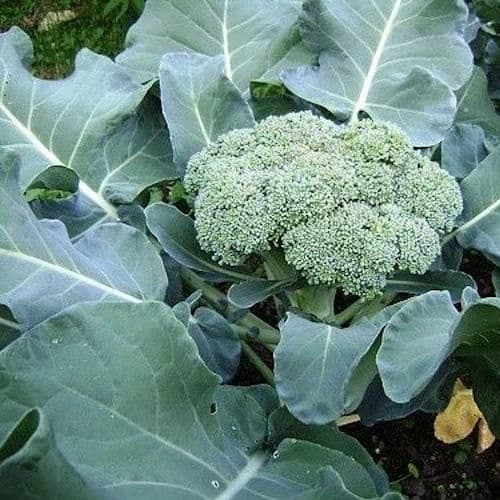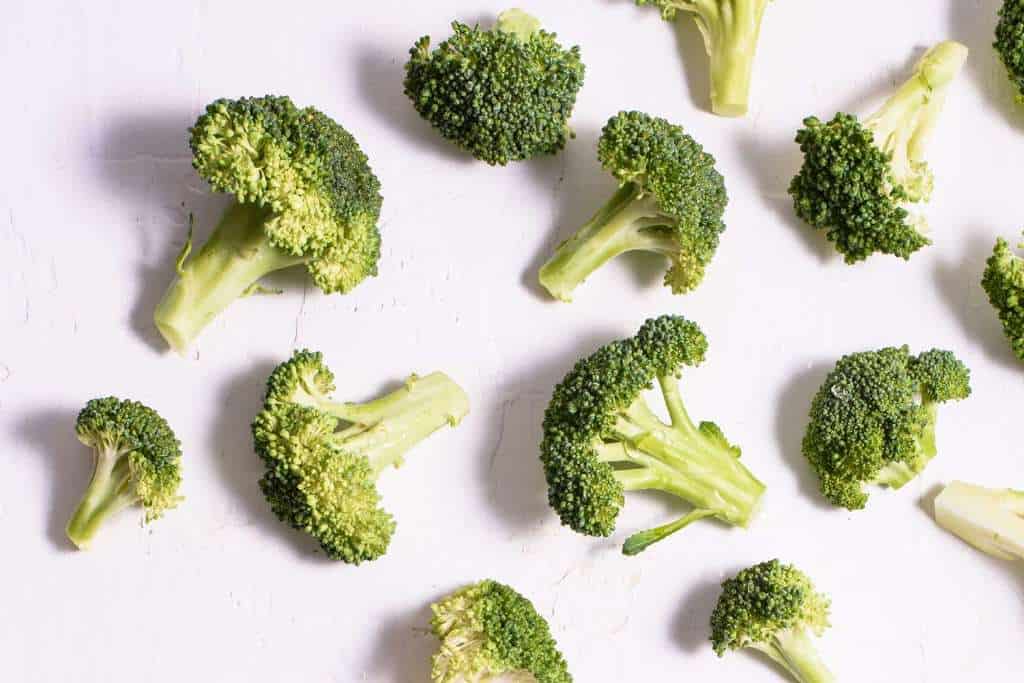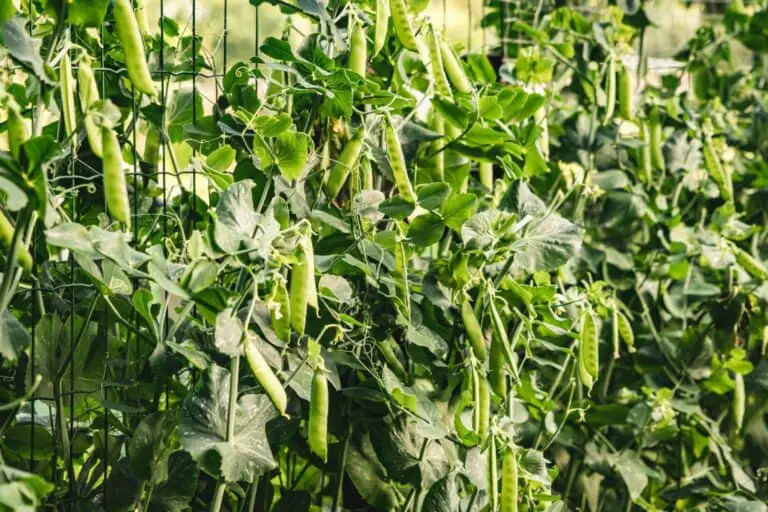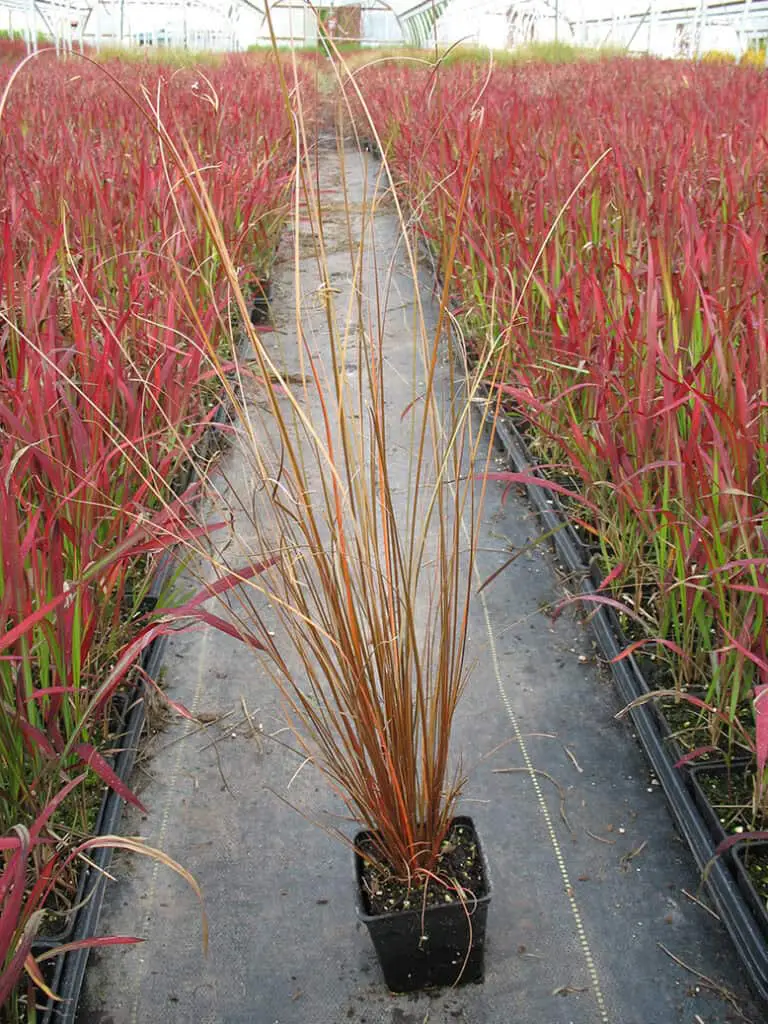Does Broccoli Have a Defense Chemical Mechanism? Nature’s Bodyguard

Welcome to the captivating world of broccoli, where vibrant green florets hide a secret defense chemical mechanism. Have you ever wondered how this beloved vegetable protects itself from external threats? Prepare to be amazed as we delve into the intriguing nature of broccoli’s defense system, often hailed as nature’s bodyguard.
Broccoli, with its crisp texture and distinct flavor, has long been celebrated for its nutritional prowess. But beyond its impressive nutrient profile, this superfood possesses an arsenal of natural compounds that shield it from harm. From chemical defenses that unleash powerful compounds to physical barriers that deter intruders, broccoli has developed an intricate and effective survival strategy.
In this article, we will uncover the hidden world of broccoli’s defense chemical mechanism. Additionally, we’ll unravel the plant’s indirect defense strategy, where it calls upon natural allies to fend off threats.
Get ready to embark on a journey that will leave you in awe of broccoli’s resilience and appreciating its role as nature’s bodyguard.
Overview of Broccoli’s Defense Chemical Mechanism
Plants have evolved ingenious defense mechanisms to safeguard themselves against herbivores, pathogens, and other potential dangers. Broccoli, a member of the Brassica family, is no exception. It utilizes a sophisticated chemical defense mechanism to fend off threats and ensure its survival.
At the core of broccoli’s defense system are specialized compounds known as defense chemicals. These chemicals play a crucial role in deterring pests, inhibiting microbial growth, and even influencing the plant’s interactions with its surroundings.
By understanding how broccoli employs these defense chemicals, we gain valuable insights into the fascinating world of plant defense mechanisms.
Types of Defense Chemicals in Broccoli
Broccoli boasts an impressive array of defense chemicals, each with its own unique properties and contributions to the plant’s defense strategy.
1. Glucosinolates
The most prominent group of defense chemicals found in broccoli are glucosinolates. These sulfur-containing compounds are responsible for the characteristic pungent aroma and taste of broccoli.
Glucosinolates serve as potent deterrents to herbivores, as they can be toxic or unpalatable. When a pest attempts to feed on broccoli, the glucosinolates are enzymatically broken down, releasing toxic compounds that repel or harm the pest. This defensive mechanism helps protect the plant from being consumed and allows it to thrive.
2. Flavonoids
Broccoli also contains other secondary metabolites that contribute to its defense. These metabolites, such as phenolic compounds and flavonoids, possess antimicrobial and antioxidant properties, further bolstering broccoli’s resilience against pathogens and oxidative stress.
3. Isothiocyanates
In addition to glucosinolates and flavonoids, Broccoli uses isothiocyanates to protect itself, and the one it happens to use is called sulforaphane. Sulforaphane is a chemical compound released by vegetables like broccoli as a defense mechanism after damage has been done to the plant (like damage from chewing) .
It is responsible for the vegetable’s sometimes sharp and bitter taste, and hence its legion of haters, but with that unpleasantness come great benefits
The Role of Glucosinolates in Broccoli’s Defense

Glucosinolates are a key player in broccoli’s defense arsenal, and their chemical properties are central to their effectiveness. These compounds consist of a β-D-thioglucose moiety attached to a sulfonated oxime group and a variable side chain. It is this side chain that determines the specific glucosinolate type found in broccoli, with different varieties exhibiting distinct profiles.
When pests attack broccoli, they trigger the activation of enzymes called myrosinases, which are stored in separate compartments within the plant’s cells. Myrosinases catalyze the hydrolysis of glucosinolates, resulting in the formation of toxic isothiocyanates, nitriles, or other bioactive compounds.
These breakdown products repel pests by causing irritation, affecting their feeding behavior, or even exerting direct toxicity. This defense mechanism not only protects broccoli but also influences the interactions between the plant and its herbivorous predators.
Furthermore, the breakdown products of glucosinolates have attracted considerable attention due to their potential health benefits for humans. Research suggests that certain isothiocyanates derived from glucosinolates may possess anticancer, antioxidant, and anti-inflammatory properties, making broccoli a valuable addition to a healthy diet.
Read: Broccoli Regeneration After Cutting Explained!
Inducible Defense Responses in Broccoli
Broccoli’s defense mechanism is not always active; it can be induced in response to specific threats. This phenomenon, known as inducible defense, allows the plant to conserve energy when not under attack and deploy its defenses strategically when needed.
When broccoli detects the presence of pests or other stressors, it initiates a series of biochemical and genetic processes that lead to the production of defense chemicals specifically tailored to counteract the identified threat. This targeted response ensures the efficient allocation of resources and maximizes the plant’s defense capabilities.
The concept of inducible defenses is a fascinating adaptation observed in many plant species. It allows plants like broccoli to “sense” their environment and activate defense mechanisms only when necessary, reducing unnecessary resource expenditure. This adaptive strategy enables the plant to prioritize growth and development during favorable conditions while effectively defending itself when faced with challenges.
Broccoli exhibits various inducible defense responses in the presence of pests or damage. For instance, when attacked by herbivores, the plant may release volatile compounds that attract natural enemies of the pests, such as parasitic wasps or predatory insects. This indirect defense mechanism provides an additional layer of protection by recruiting external allies to combat the herbivores.
Interactions Between Broccoli’s Defense Chemicals and Pests
The interactions between broccoli’s defense chemicals and pests are a dynamic and intricate interplay driven by evolutionary pressures. Pests, in their quest for sustenance, have developed strategies to overcome the plant’s defenses, leading to an ongoing evolutionary arms race between broccoli and its attackers.
Pests have evolved various mechanisms to bypass or neutralize broccoli’s defense chemicals. For example, some herbivores possess specialized enzymes that detoxify or sequester the toxic breakdown products of glucosinolates, rendering them ineffective as deterrents. Other pests have developed behavioral adaptations to avoid or tolerate the defensive compounds, allowing them to continue feeding on the plant.
In response to these adaptations, broccoli and other plants have continued to refine their defense mechanisms, sometimes evolving new defense chemicals or modifying existing ones. This coevolutionary dance between plants and pests exemplifies the intricate and dynamic nature of ecological interactions and the constant pressure to adapt and survive.
Environmental Factors Influencing Broccoli’s Defense Chemicals
Broccoli’s production of defense chemicals is influenced by various environmental factors. Temperature, light availability, and nutrient levels play critical roles in determining the plant’s chemical defenses.
Broccoli plants respond to different temperature ranges, with certain thresholds triggering the synthesis of specific defense chemicals. Similarly, light availability affects the production of defense chemicals, as broccoli plants rely on photosynthesis to generate the energy required for their synthesis.
Additionally, nutrient availability, such as nitrogen and sulfur, can significantly impact the quality and quantity of defense chemicals produced by broccoli. However, these environmental factors also involve trade-offs, as allocating resources to defense may reduce the plant’s growth and yield.
Genetic Manipulation of Defense Chemicals in Broccoli
Scientists have the ability to genetically manipulate the defense chemicals in broccoli, opening up new possibilities for enhancing its defense mechanisms. Through genetic engineering techniques, specific genes responsible for defense chemical synthesis can be modified or introduced into broccoli plants.
This manipulation can potentially enhance the levels of certain defense chemicals or introduce novel compounds with improved protective properties. However, it is essential to consider the potential benefits and risks associated with genetic engineering, including potential effects on the plant’s nutritional profile, unintended consequences, and public perception.
Ongoing research in this field aims to explore the full potential of genetic manipulation for enhancing broccoli’s defense chemical mechanism.
The Impact of Cooking on Broccoli’s Defense Chemicals
Cooking methods and durations can influence the levels of defense chemicals in broccoli and, consequently, their potential health benefits. The cooking process can lead to the degradation or leaching of defense chemicals, affecting their overall retention. Steaming or stir-frying broccoli for a shorter duration is generally recommended to minimize the loss of these valuable compounds.
Some defense chemicals, such as glucosinolates, are heat-sensitive and can be partially destroyed during cooking. Despite this, cooking broccoli still offers significant nutritional benefits, such as improved digestibility and the retention of other essential nutrients.
Broccoli’s Defense Mechanism in Organic Farming
The defense chemical mechanism of broccoli holds particular relevance in organic farming practices. Organic farmers rely on natural methods to manage pests and diseases, and the presence of effective defense chemicals in broccoli can contribute to their overall pest control strategies. Additionally, organic farming practices, such as the use of compost and organic fertilizers, can influence the production of defense chemicals in broccoli.
Studies have shown that organically grown broccoli tends to have higher levels of certain defense compounds compared to conventionally grown broccoli. This makes organic broccoli an appealing choice for those seeking vegetables with robust defense mechanisms.
Read: Do Broccoli Seeds Grow Fast? How Long Broccoli Seed to Harvest Time
The Benefits of Broccoli’s Defense Chemicals Mechanism
Broccoli’s defense chemical mechanism not only safeguards the plant but also offers several benefits to us, the consumers. When we consume broccoli, we ingest the same defense compounds that protect the plant. This translates into potential health benefits for humans.
1. Antioxidant Powerhouse
The isothiocyanates produced by broccoli’s defense mechanism are powerful antioxidants. Antioxidants help neutralize harmful free radicals in our bodies, reducing oxidative stress and combating inflammation.
Studies suggest that a diet rich in cruciferous vegetables, including broccoli, may contribute to a lower risk of chronic diseases, such as heart disease, certain cancers, and neurodegenerative disorders.
2. Detoxification and Cancer Prevention
Some isothiocyanates derived from broccoli have been shown to possess anticancer properties. These compounds can stimulate detoxification enzymes in our bodies, aiding in the elimination of potentially harmful substances. By promoting detoxification, broccoli’s defense chemicals may help reduce the risk of cancer and other chronic diseases.
3. Boosting the Immune System
The antimicrobial properties of broccoli’s defense compounds can also benefit our immune system. These compounds have been found to possess antibacterial properties, helping to combat harmful bacteria and potentially boosting our immune system’s ability to fight infections.
4. Nutrient Density
In addition to its defense compounds, broccoli is also a nutritional powerhouse. It is rich in essential vitamins, minerals, and dietary fiber, making it a valuable addition to a healthy diet. Broccoli is an excellent source of vitamin C, vitamin K, folate, and potassium. It also contains significant amounts of vitamin A, vitamin B6, and iron. The combination of defense compounds and essential nutrients makes broccoli a unique and beneficial vegetable.
Maximizing the Benefits of Broccoli
To maximize the benefits of broccoli’s defense mechanism and the nutrients it offers, it is essential to handle and cook broccoli properly. Here are some tips to make the most of this nutritious vegetable:
- Choose fresh broccoli: Look for firm, compact heads with a vibrant green color. Avoid broccoli with yellowing florets or signs of wilting.
- Store properly: Keep broccoli refrigerated in a plastic bag or airtight container to maintain its freshness. Consume it within a few days for the best flavor and nutritional value.
- Preparation: Before cooking, wash broccoli thoroughly under running water to remove any dirt or debris. Trim off the tough stem and cut the florets into bite-sized pieces.
- Cooking methods: Broccoli can be enjoyed in various ways, including steaming, sautéing, roasting, or even consuming it raw in salads. To retain its nutritional value, avoid overcooking. Cook until it is tender but still crisp.
- Pairing with healthy fats: The absorption of certain nutrients in broccoli, such as vitamin K and beta-carotene, can be enhanced when consumed with healthy fats. Consider adding a drizzle of olive oil or pairing broccoli with avocado, nuts, or seeds.
- Combining with other vegetables: Broccoli can be a versatile addition to many dishes. Mix it with other colorful vegetables to create nutrient-packed stir-fries, soups, or roasted vegetable medleys.
Conclusion
In conclusion, broccoli’s defense chemical mechanism is a captivating aspect that showcases the plant’s ability to protect itself. Environmental factors, genetic manipulation, cooking methods, and organic farming practices all shape the presence and effectiveness of defense chemicals in broccoli. By exploring and harnessing this mechanism, we can unlock the potential for healthier, more resilient crops and promote sustainable agricultural practices for a better future. So, let’s continue to appreciate the remarkable natural defenses of broccoli and their implications for our food systems.
FAQs
Are there any other vegetables with defense chemical mechanisms like broccoli?
Yes, many plants, including other members of the Brassica family like cabbage and cauliflower, possess similar defense chemical mechanisms. However, the specific types and concentrations of defense chemicals may vary among different plant species.
Can the defense chemicals in broccoli be harmful if consumed in large quantities?
While defense chemicals in broccoli, such as glucosinolates, have potential health benefits, consuming extremely high amounts may have adverse effects. It is advisable to enjoy broccoli as part of a varied and balanced diet.
How can I maximize the retention of defense chemicals while cooking broccoli?
To retain the maximum levels of defense chemicals while cooking broccoli, it is recommended to use gentle cooking methods such as steaming or stir-frying. Avoid overcooking or boiling for prolonged periods, as this can lead to the loss of some of these valuable compounds.
Is organic broccoli likely to have higher levels of defense chemicals compared to conventionally grown broccoli?
Organic broccoli may have higher levels of defense chemicals due to the absence of synthetic pesticides. However, variations can occur depending on factors such as soil conditions and cultivar selection.
Are there any health benefits associated with consuming broccoli’s defense chemicals?
Research suggests that certain compounds derived from broccoli’s defense chemicals, such as isothiocyanates, may have potential health benefits, including anti-cancer and anti-inflammatory properties. However, more studies are needed to fully understand their effects on human health.
How do pests develop resistance to broccoli’s defense chemicals over time?
Pests can develop resistance to defense chemicals through genetic mutations or by acquiring detoxification mechanisms that can neutralize or sequester the toxic compounds. Over time, repeated exposure to defense chemicals can drive the selection of individuals within the pest population that possess these advantageous traits.
Can the defense chemicals in broccoli harm beneficial insects or organisms?
While defense chemicals in broccoli are primarily aimed at deterring pests, they can also have effects on beneficial insects or organisms. However, the impact is often dose-dependent, and the concentrations of defense chemicals in broccoli are generally not harmful to most beneficial organisms when consumed in normal quantities. Additionally, the activation of inducible defenses in response to specific threats can help minimize any unintended negative effects on beneficial organisms.






